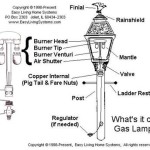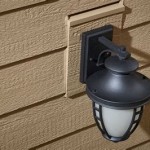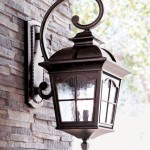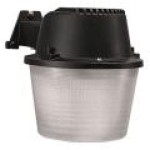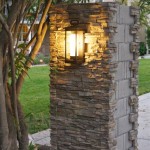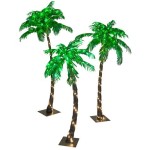Outdoor Lighting Ideas For Photography
Outdoor lighting presents unique challenges and opportunities for photographers. Unlike controlled studio environments, natural light is dynamic, constantly changing in direction, intensity, and color temperature. Mastering outdoor lighting techniques is crucial for capturing compelling images, whether shooting landscapes, portraits, wildlife, or architectural subjects.
Understanding the interplay of light and shadow, the impact of different weather conditions, and strategic use of available tools are essential skills. This article explores various outdoor lighting scenarios and offers practical techniques for photographers seeking to elevate their outdoor photography.
Golden Hour and Blue Hour Photography
The "golden hour," occurring shortly after sunrise and before sunset, represents a period of soft, warm light. During this time, the sun is low on the horizon, casting long, gentle shadows and producing a flattering glow. The light is diffused by the atmosphere, minimizing harsh highlights and creating a generally pleasing aesthetic. This is particularly useful for portrait photography, as it softens skin tones and reduces the appearance of imperfections.
Photographers often utilize the golden hour to capture landscapes with a sense of depth and drama. The long shadows accentuate textures and forms, highlighting the contours of the terrain. In architectural photography, the golden hour can enhance the warmth of building materials, adding character and visual interest to structures.
The "blue hour," which follows sunset and precedes sunrise, offers a different but equally captivating lighting scenario. During this period, the sun is below the horizon, and the sky is illuminated by indirect sunlight, resulting in a cool, blue-toned light. This light quality is often associated with tranquility and mystery. Blue hour is particularly well-suited for capturing cityscapes, as the artificial lights of the city contrast beautifully with the cool ambient light of the sky.
Landscape photographers might choose to shoot during the blue hour to capture panoramic views or seascapes, creating evocative and atmospheric images. The soft, diffused light minimizes harsh shadows and produces a smooth, even illumination across the scene. To maximize sharpness and detail, tripods are highly recommended during both the golden and blue hours due to lower light levels and the need for longer exposures.
Utilizing these times of day requires careful planning and awareness of the sunrise and sunset times at a given location. Weather conditions can also significantly impact the quality of light during these periods. Cloudy skies can diffuse the light even further, creating a softer, more subtle effect, while clear skies allow for more vivid colors and dramatic shadows.
Diffusing Direct Sunlight
Direct sunlight, particularly during midday, can create harsh shadows and blown-out highlights, making it challenging to capture balanced and pleasing photographs. One of the most effective solutions for mitigating the effects of direct sunlight is diffusion. Diffusion involves scattering the light, thereby reducing its intensity and creating a softer, more even illumination.
Natural diffusers include clouds, which act as massive softboxes, scattering sunlight and reducing its harshness. Overcast days are ideal for capturing portraits or landscapes with even lighting and minimal shadows. However, when shooting in direct sunlight, photographers can utilize a variety of tools to create artificial diffusion.
Scrims are large, translucent panels that can be placed between the sun and the subject to diffuse the light. These panels are available in various sizes and materials, offering different levels of diffusion. A common option is a collapsible scrim, which is portable and easy to set up in various locations. Reflectors can also be used in conjunction with scrims to bounce light back onto the subject, filling in shadows and providing a more balanced exposure.
For smaller subjects or close-up photography, a diffuser dome or a diffuser cap can be attached to the lens to soften the light. This technique is often used in macro photography or when shooting portraits in tight spaces. Diffusers are particularly useful when shooting portraits, as they soften skin tones and reduce the appearance of harsh shadows on the face.
Positioning the diffuser correctly is crucial for achieving the desired effect. The diffuser should be placed as close to the subject as possible without blocking the light entirely. The angle of the diffuser should also be adjusted to ensure that the light is evenly distributed across the subject. Experimentation with different diffusion techniques is key to understanding how they impact the final image.
Utilizing Reflectors to Fill Shadows
Reflectors are versatile tools that can be used to bounce light back onto a subject, filling in shadows and creating a more balanced exposure. They are particularly useful when shooting portraits or product photography outdoors, where controlling the direction and intensity of light is essential.
Reflectors come in various shapes, sizes, and materials, each offering different reflective properties. White reflectors provide a soft, neutral light, while silver reflectors produce a brighter, more specular light. Gold reflectors add warmth to the light, which can be flattering for skin tones. Black reflectors, also known as flags, can be used to block light and create deeper shadows.
Positioning the reflector correctly is crucial for achieving the desired effect. The reflector should be placed opposite the light source, angling it to bounce the light back onto the subject. The distance between the reflector and the subject will determine the intensity of the reflected light. Experimentation is necessary to find the optimal position and angle for the reflector.
When shooting portraits, reflectors can be used to fill in shadows under the eyes and chin, creating a more flattering and even lighting. They can also be used to add highlights to the hair or eyes, adding sparkle and dimension to the image. In landscape photography, reflectors can be used to bounce light onto shadowed areas, revealing details that would otherwise be lost in darkness.
In architectural photography, reflectors can be used to highlight specific features of a building, such as a doorway or a window. They can also be used to add warmth to the exterior of a building, making it appear more inviting and visually appealing. The size of the reflector should be proportionate to the size of the subject. Larger reflectors are needed for larger subjects or when shooting in bright sunlight.
The surface material of the reflector will also impact the quality of the reflected light. White reflectors produce a soft, diffused light, while silver reflectors produce a brighter, more specular light. Gold reflectors add warmth to the light, which can be useful for creating a more inviting and natural look. Choosing the right reflector for a particular situation depends on the desired effect and the ambient lighting conditions.
Managing Backlighting Techniques
Backlighting occurs when the light source is positioned behind the subject, facing the camera. This can create dramatic and visually striking effects, but it also presents challenges in terms of exposure and dynamic range. Mastering backlighting techniques is essential for capturing impactful images in various outdoor photography genres.
One of the primary challenges of backlighting is preventing the subject from being underexposed. When the light source is behind the subject, the camera's metering system may be fooled into underexposing the foreground to compensate for the bright background. This can result in a silhouette effect, where the subject appears as a dark outline against a bright sky.
To avoid underexposure, photographers can use several techniques. One approach is to use spot metering, which measures the light only in a small area of the frame, typically the subject's face. This allows the photographer to ensure that the subject is properly exposed, even if the background is overexposed. Another technique is to use exposure compensation to increase the overall brightness of the image.
Another method is to use fill flash to add light to the subject's face. Fill flash is a technique where a flash is used to supplement the ambient light, filling in shadows and creating a more balanced exposure. The flash should be used sparingly to avoid overpowering the natural light and creating an unnatural look.
Backlighting can create beautiful rim light around the subject, which can help to separate the subject from the background and create a three-dimensional effect. Rim light is a thin line of light that outlines the subject, adding a sense of depth and dimension to the image. Experimenting with different angles and positions is vital to achieve the desired rim light effect.
When shooting portraits with backlighting, it is important to pay attention to the subject's hair. Backlighting can create highlights in the hair, adding sparkle and dimension. However, it can also create distracting flares if the sun is directly behind the subject. Using a lens hood can help to reduce flares and improve contrast.
Backlighting can also be used to create silhouettes. Silhouettes are created when the subject is completely underexposed, appearing as a dark outline against a bright background. Silhouettes are often used to convey a sense of mystery and drama. To create a silhouette, the photographer should meter for the background and underexpose the subject. The shape of the subject is critical in silhouette photography, so it is important to choose a subject with a strong and recognizable form.

5 Summer Outdoor Lighting Ideas You Ll Love
%20(1).jpeg?strip=all)
27 Garden Lighting Ideas Designer Outdoor Wall Jaquar

Outdoor Lighting Ideas For Backyard Party Highland Grove Landscaping Farm

Garden Outdoor Lighting Ideas 9 Inspiring To Light Up Your Backyard

11 Creative Outdoor Lighting Ideas To Brighten Up Your Yard Sa Decor Design

Friday Favorites Outdoor Lighting Ideas For Your Lake Home Retreat

Landscape Lighting Ideas To Accentuate Your Property Plant Professionals

3 Unique Ideas For Extravagant Outdoor Lighting

Enhance Your Outdoor Space A Comprehensive Guide To Landscape Lighting

Landscape Lighting 2024 Our Perfect Vision Of Outdoor Trends Lux
